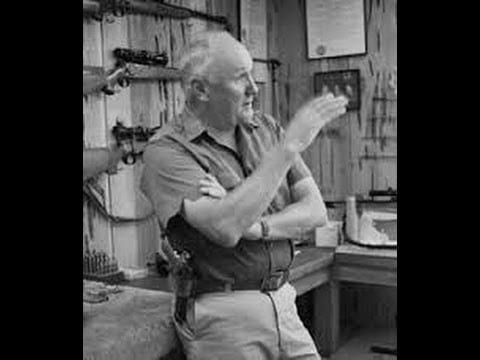
In this post on the Jeff Cooper conditions of firearm readiness we discuss situational awareness and give you a mental tool to allow you to discuss and classify your mental awareness.
This color code system is not meant do you to use while actually being engaged in a fight – no one expects you to think about going to condition red BEFORE you actual respond to a physical threat, but understanding the concept and being able to articulate what is going on (especially after the event) is quite useful.
This concept was popularized by Marine Corps Colonel Jeff Cooper, who believed that the most important means of surviving a lethal attack was not a person’s skill or tools, but was their combat mindset.
Col Cooper did not claim to invent the code, but he did do more than anyone else to popularize it among martialists.
White: Unaware and unprepared.
If attacked in Condition White, the only thing that may save you is the inadequacy or ineptitude of your attacker. When confronted by something nasty, your reaction will probably be “Oh my God! This can’t be happening to me.”
Yellow: Relaxed alert.
No specific threat situation. Your mindset is that “today could be the day I may have to defend myself”. You are simply aware that the world is a potentially unfriendly place and that you are prepared to defend yourself, if necessary. You use your eyes and ears, and realize that “I may have to shoot today”. You don’t have to be armed in this state, but if you are armed you should be in Condition Yellow. You should always be in Yellow whenever you are in unfamiliar surroundings or among people you don’t know. You can remain in Yellow for long periods, as long as you are able to “Watch your six.” (In aviation 12 o’clock refers to the direction in front of the aircraft’s nose. Six o’clock is the blind spot behind the pilot.) In Yellow, you are “taking in” surrounding information in a relaxed but alert manner, like a continuous 360 degree radar sweep. As Cooper put it, “I might have to shoot.”
Orange: Specific alert.
Something is not quite right and has your attention. Your radar has picked up a specific alert. You shift your primary focus to determine if there is a threat (but you do not drop your six). Your mindset shifts to “I may have to shoot that person today”, focusing on the specific target which has caused the escalation in alert status. In Condition Orange, you set a mental trigger: “If that person does “X”, I will need to stop them”. Your pistol usually remains holstered in this state. Staying in Orange can be a bit of a mental strain, but you can stay in it for as long as you need to. If the threat proves to be nothing, you shift back to Condition Yellow.
Red: Condition Red is fight.
Your mental trigger (established back in Condition Orange) has been tripped. “If ‘X’ happens I will shoot that person” – ‘X’ has happened, the fight is on.
Some, including the USMC have added condition black, which is a breakdown of mental and physical performance.
Studies have shown that when the heart beats faster than 175 heartbeats per minute causes this as increased heart rate becomes counter productive.
In condition black the shooter probably has stopped thinking correctly.
Condition black often occurs when a person is forced to go from Condition White or Yellow immediately to Condition Red.
Anyone serious about personal protection, including the defensive use of a pistol should study Col. Cooper. His work has influenced much of what is state of the art in defensive shooting.
